Five Rail-Trails Along the Underground Railroad
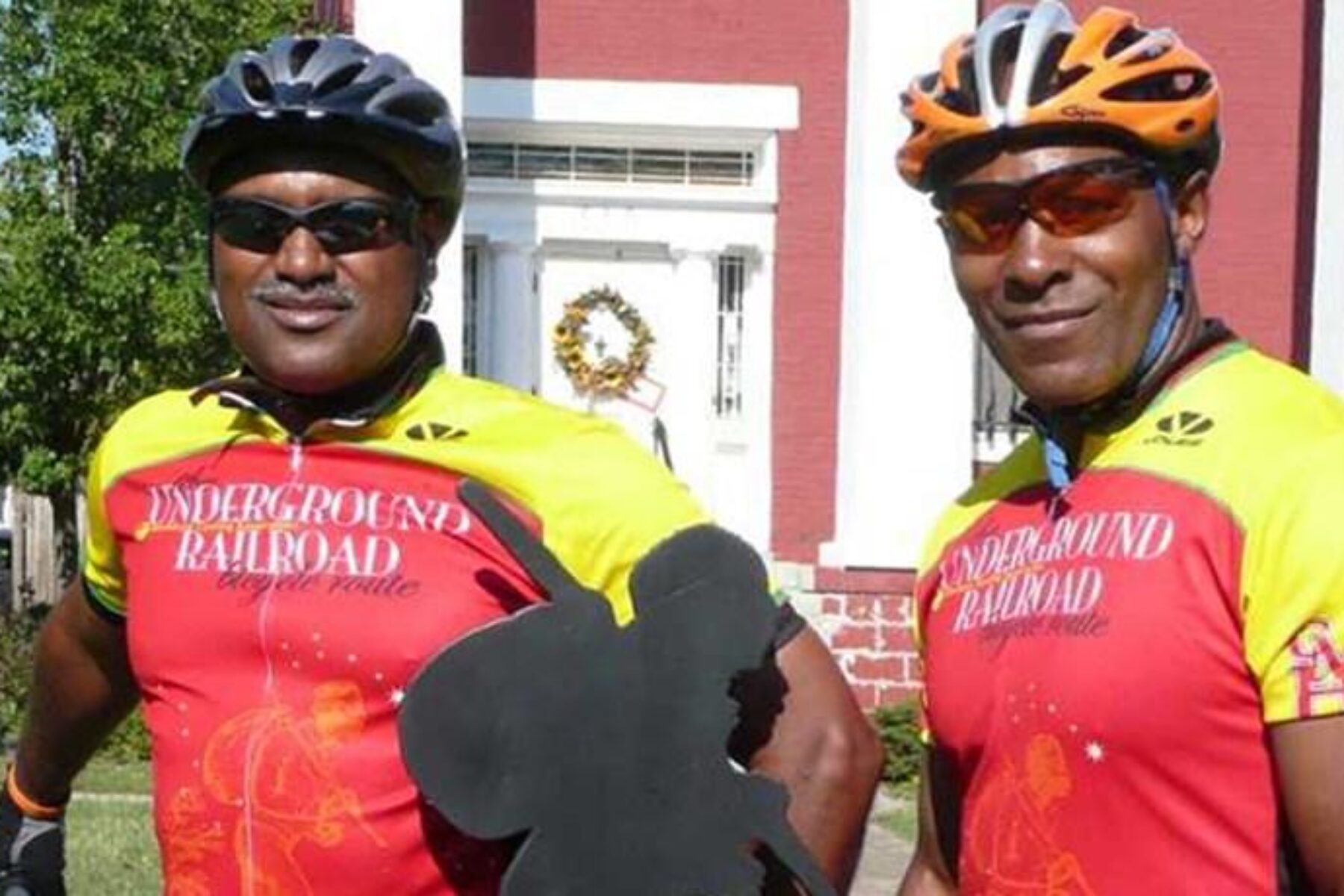
These rail-trails along the route are providing connections to some of the Underground Railroad’s celebrated and historic landmarks.
Spanning more than 2,007 miles between Alabama and Canada, the Underground Railroad Bicycle Route (UGRR) memorializes the network that helped slaves escape to freedom before and during the Civil War.
A Historic Route
Created by the Adventure Cycling Association in partnership with the Center for Minority Health (now the Center for Health Equity) at the University of Pittsburgh and multiple advisory teams made up of historians, preservationists and researchers, the first part of the route was inspired by a song used by freedom seekers to communicate from plantation to plantation, titled, “Follow the Drinking Gourd,” which refers to following the North Star and waterways to the Ohio River on an escape route from Alabama and Mississippi.
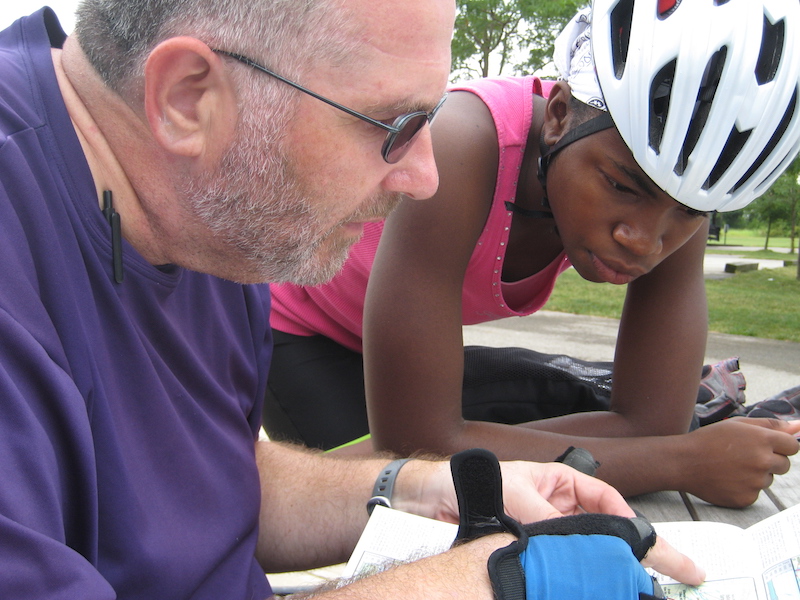
The Ohio section—on which several rail-trails mentioned in this article reside—was created with the help of a dedicated volunteer and Ohio resident, Chuck Harmon. Much of the second part of the route was created in close consultation with the advisory teams to ensure the route encompassed rich historical sites and met Adventure Cycling’s standards for cycling roads and paths.
“The area of Ohio is so rich with history,” said Ginny Sullivan, director of travel initiatives for Adventure Cycling. “Very few freedom seekers escaped from south to north. Most freedom seekers were actually from Kentucky or near the Mason-Dixon Line, as there were people waiting on the other side who were organized, and who would help them.”
This includes two such people in Ripley, Ohio—just across the border with Kentucky: Presbyterian Minister John Rankin, who would light a candle (some say a pole with a lamp) to let freedom seekers know it was safe to cross the Ohio River, and who was later the inspiration for the book Uncle Tom’s Cabin by Harriet Beecher Stowe; and John Parker, a foundryman and former slave who made the dangerous crossing into Kentucky to help lead hundreds of people to freedom.
Because runaway slaves could be reclaimed by slave owners according to the Fugitive Slave Act of 1850, true freedom really meant leaving the United States altogether—and the Underground Railroad had safe houses dotting the landscape into Canada. Along this route are various rail-trails that connect and highlight the cultural heritage of a region where brave conductors risked their lives to lead thousands of people to freedom.
Here are five that also help make up Adventure Cycling’s UGRR.
Rail-Trails Along the UGRR
1. Little Miami Scenic Trail (Ohio)
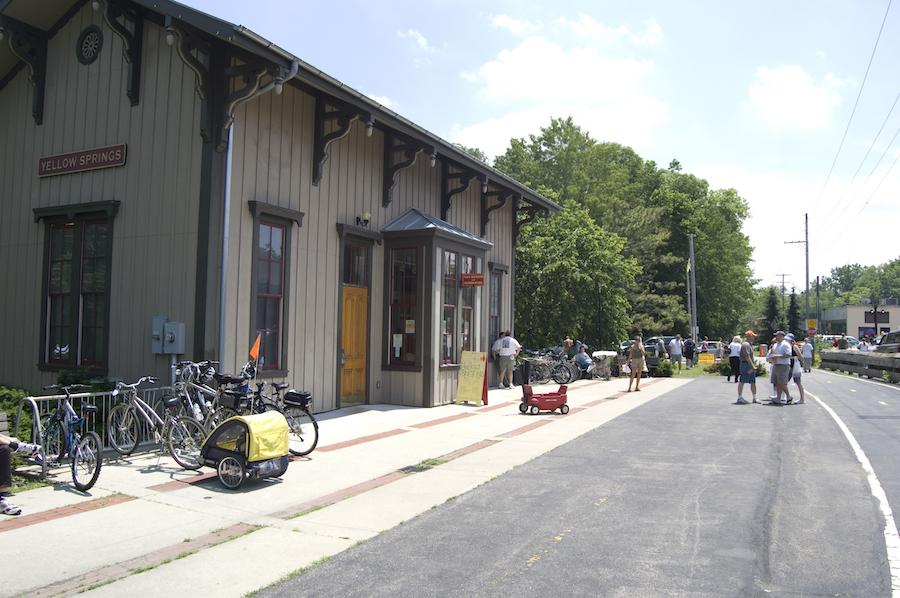
Fifty miles of the 78.1-mile Little Miami Scenic Trail make up part of the UGRR—from Milford north to Xenia, Ohio—offering a scenic journey through rural river landscapes and quaint towns. The trail offers numerous connections as part of two networks: a 340-mile off-road system through the Miami Valley; and the developing 272-mile Ohio to Erie Trail, which spans from Cincinnati to Cleveland.
A UGRR spur from Waynesville connects to Springboro, which was founded by anti-slavery Quaker Jonathan Wright in 1815. It’s estimated that 4,000 people escaped to freedom here, and the Springboro Area Historical Society has documented 27 Underground Railroad depots (in and around the city), thought to be more than in any other area of the state. Today, trail users can stay in one of these posts, Wright’s former home, now the Wright House Bed & Breakfast.
2. Western Reserve Greenway (Ohio)
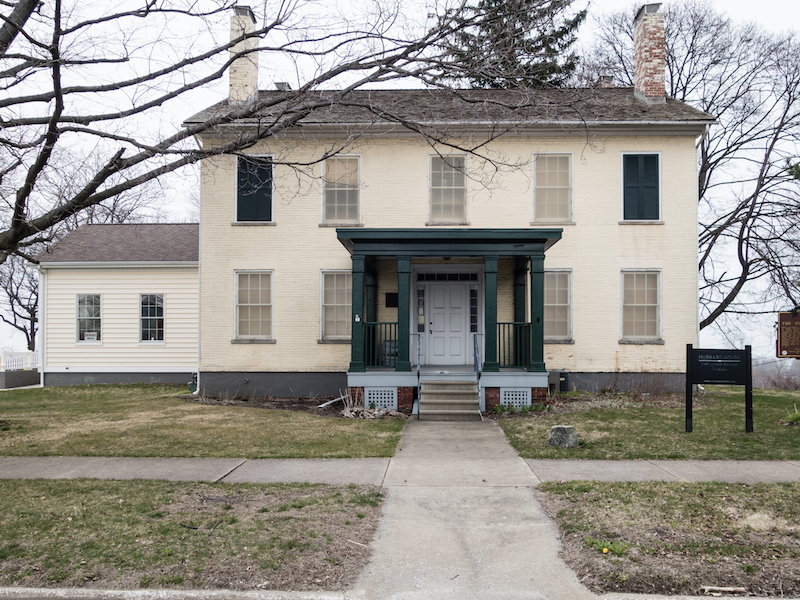
Stretching 43 miles from Warren to Ashtabula, the Western Reserve Greenway—of which 14.5 miles are part of the UGRR (from Rock Creek to Ashtabula)—features a dozen Underground Railroad interpretive markers along the 27 miles of its route in Ashtabula County. (Bicyclists take note! The trail is the longest section of the planned 110-mile Great Ohio Lake-to-River Greenway from Lake Erie to East Liverpool.)
Sites include Hubbard House (built in 1840–1841), which was once a safe house and northern terminus crossing point to Canada, nicknamed Mother Hubbard’s Cupboard and The Great Emporium. Listed on the National Register of Historic Places, it is now a museum dedicated to the area’s Underground Railroad network.
3. Prairie Grass Trail/Ohio to Erie Trail (Ohio)
The scenic 29-mile Prairie Grass Trail—part of the longer 326-mile Ohio to Erie Trail connecting Cleveland and Cincinnati—features a number of communities that played a role in the Underground Railroad between Xenia and London.
DON’T MISS: Honoring the Legacy of African-American Cycling Legend Major Taylor
A highlight of the route is the National Afro-American Museum and Cultural Center, located just north of Xenia in Wilberforce. The museum aims to share information about black history, art and culture. Wilberforce is also the home of two historically black universities: Wilberforce and Central State.
4. Niagara River Recreation Trail (Canada)
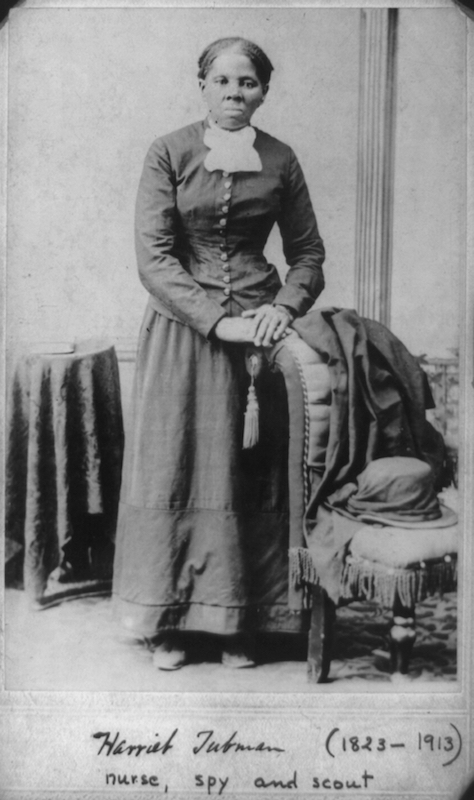
In Canada, the 31 miles of the Niagara River Recreation Trail (53 kilometers) that travel the UGRR claim a rich Underground Railroad history. A UGRR spur at the Lewiston-Queenston Bridge heads 31.5 miles to Murphy Orchards—part of the National Park Service’s Underground Railroad Network to Freedom Program in New York—where legend has it that the owners were Underground Railroad station masters.
Also in New York is the Niagara Falls Underground Railroad Heritage Area, comprising the entire municipal limits of the City of Niagara Falls. A heritage center (located in the former 1863 U.S. Custom House at the Amtrak Station), opening in May 2018, will celebrate the bravery of the freedom seekers, free African Americans and abolitionists “who risked their own lives to achieve the most basic rights of liberty” (Niagara Falls Underground Railroad Heritage Area website).
Heading slightly off the trail to St. Catharines, Ontario, a plaque honors arguably the most famous Underground Railroad conductor, Harriet Tubman, who lived in the community for nearly a decade.
5. Georgian Trail (Canada)
Nine miles of the Georgian Trail—which stretches for a total of 21 miles (34 kilometers) between Collingwood and Meaford in Ontario, Canada—travels along the UGRR. As a bonus for those trail users who simply love a little respite, the Georgian Trail begins at pretty Harbourview Park, which has an arboretum, fishing area and pergola, and passes by a variety of parks, golf courses and services that make for a pleasant experience.
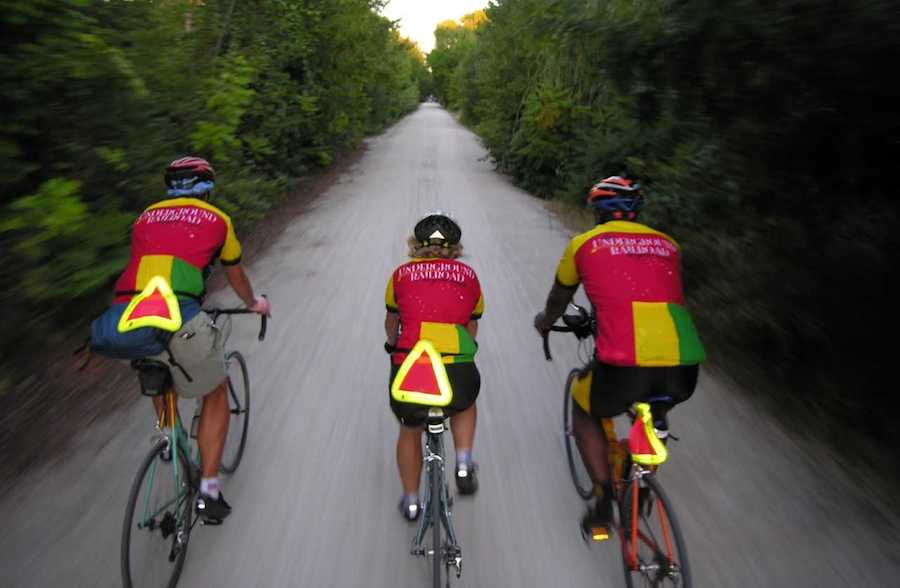
Eventually, you’ll veer off the trail and onto an on-road segment that leads to Owen Sound—historically known as the final terminal along the Underground Railroad. Many former slaves settled in Owen Sound (in the village originally called Sydenham) after earning their freedom, and the town has led an Emancipation Picnic each year since 1862 celebrating the British Emancipation Act of 1834 and the United States Emancipation Proclamation of 1863.
*Special thanks to the Adventure Cycling Association for assisting with this article.

Donate
Everyone deserves access to safe ways to walk, bike, and be active outdoors.
